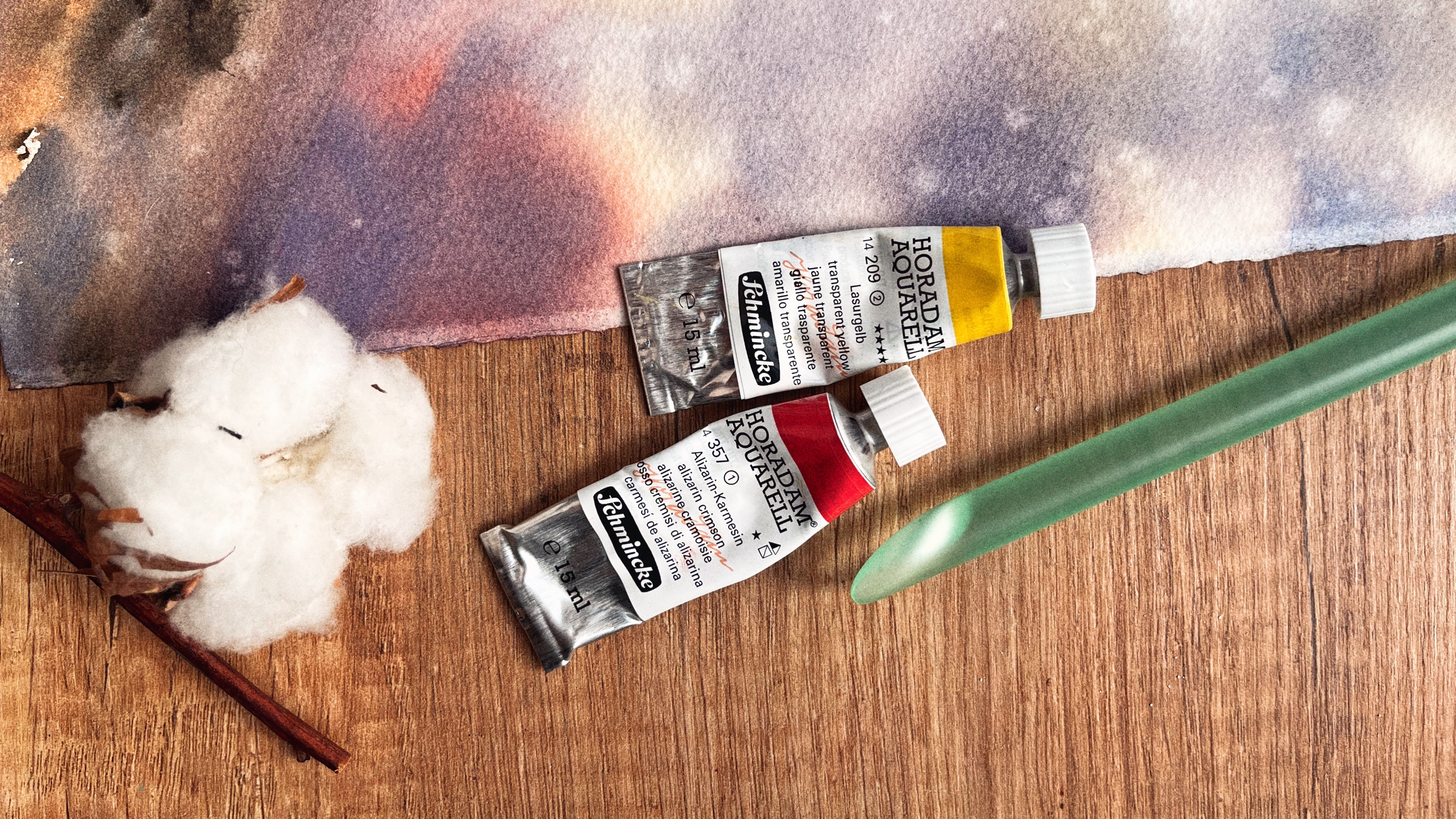- Aug 20, 2025
My Favorite Watercolor Supplies (and What I’d Recommend If You’re Just Starting Out)
- Elina Zhelyazkova
- 0 comments
Over the years, I’ve slowly upgraded my watercolor supplies. Some are top quality, and I know they’re not always affordable. That’s why I wanted to share what I use now and what I’d recommend if I were starting from scratch.
One of the things people ask me most often is about supplies. And I get it! It can be overwhelming to choose what’s right, especially if you’re just beginning. When I first started painting, I was shocked by how much stuff was out there. I spent so much time researching, yet somehow ended up with brushes I rarely use, stacks of paper I don’t love, and paints that just sit in a drawer.
I’ve already touched on how I was hesitant to invest in supplies in my first blog post, so if you missed that, I recommend giving it a read. But for now, let’s dive into the tools I love most - the ones I keep coming back to.
1. Paper
Often considered the most important supply in watercolor, especially if you use cotton paper. I’ll leave the comparison between cotton and cellulose for another post and focus on what I’ve been using for the past five years: only 100% cotton paper.
At first, I thought all cotton paper was the same. I learned the hard way it’s not. I’ve tested around 10 different brands. Some were great, others felt more like cellulose. These are my go-to favorites:
Arches – Probably the most well-known premium watercolor paper. I’ve used both cold pressed and rough, in sheets and blocks, and always had excellent results. Even paper that’s been sitting in my drawers for years holds up beautifully. It’s no wonder many professionals rely on it.
Saunders Waterford – My personal favorite. I love its natural, organic texture and the fact that it was one of the first papers I found with a “high white” option (most watercolor papers are more of an off-white). It's also available locally, which is a big plus, and at a lower price compared to Arches.
Hahnemühle Collection – Gorgeous texture that’s just a bit more pronounced than typical cold pressed. I love using it for landscapes, it brings out the best in my techniques.
Baohong Master’s Choice – When I first opened this, I thought they’d sent rough paper by mistake! The texture is that pronounced. Turns out, it’s just how this paper is. I’ve come to love it, especially with granulating paints. Every time I post a painting using it, people ask me what paper I used.

2. Paints
Paint choices are more nuanced. They depend a lot on your style, the size of your paintings, and your process. I like using a large palette filled with dried tube paints that I can easily reactivate. Some brands don’t work well for that, but these never disappoint:
Schmincke – My absolute favorite. They have a wide variety of colors, amazing vibrancy, and rewet beautifully. A quick spray of water, and they’re juicy and ready to go. Their super granulating series is also amazing, I have to stop myself from buying every new set.
Daniel Smith – I’ve tried only a few colors, but the quality is top-notch. No separation inside the tube (a common issue with other brands), and they have some truly unique shades. Like Schmincke, they also reactivate quickly.

3. Brushes
I’ve collected a lot of brushes over the years. I used to chase the “perfect brush,” but I now know it doesn’t exist, especially not if you’re avoiding real hair brushes, like I do. I switched to buying synthetic brushes a while ago and found some amazing options:
Tintoretto synthetic squirrel – The best synthetic brushes I’ve used. They mimic real hair so well it’s hard to tell the difference. Mine are over 3 years old, used almost daily, and still hold up beautifully.
Schimoni Art Brushes – Vegan, handmade, and absolutely gorgeous. Their quills are my favorite - even the ones not labeled “soft” carry a surprising amount of water and come to a fine, sharp point. Also some of the most durable synthetics I’ve had.

What I’d Recommend for Beginners
Even though the supplies I listed are fantastic, they can be pricey, especially if you’re just starting out. So here are a few budget-friendly options I recommend for beginners or anyone painting on a budget:
Paper
Bockingford – A wood-pulp paper with a lovely texture that can handle layering and washes really well. I once painted a full artwork on it without realizing it wasn’t cotton!
Paints
Look for the student-grade lines from major brands like Winsor & Newton, Sennelier, and Schmincke. These are more affordable, still high quality, and available in pans, tubes, or sets.
Van Gogh – A solid choice with great consistency and color range.
Jackson’s Art – Great quality at a very reasonable price. I use their paints often and love that they offer 21ml tubes - they last forever!
Brushes
Don’t go for large, cheap sets. Stick with a few synthetic brushes from trusted brands. You really only need 3–5 brushes to start. Look for good reviews and a range of sizes that suit your painting style.
Mindset Tips
Start small, but choose quality - even one good brush and a few colors can take you far.
Don’t get stuck in “I need better supplies” thinking. Skill always wins.
Use what you have, and make it work for you. It’s the practice that matters most.